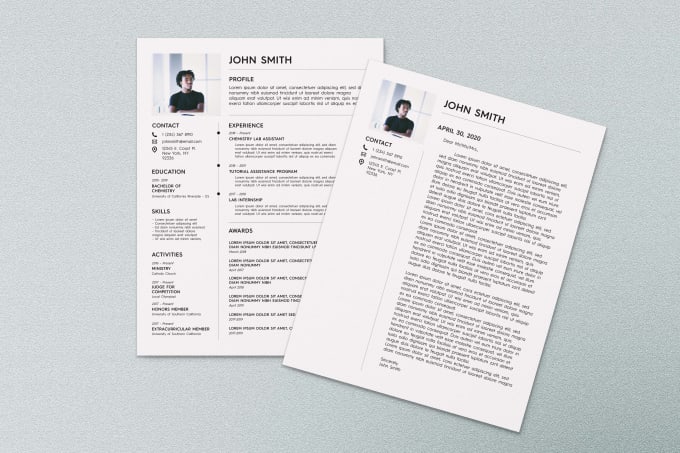How to write the first resume

One of the important things a worker should know how to do is the art of writing the curriculum vitae. Learning how to write your first CV is a useful experience to find your first job, but developing the skills to fill it out well will serve you throughout your professional life. There are many things to do to know how to write your CV correctly and make sure you make a good impression on who will read it.
The main things to consider when writing the first curriculum
Let’s see which are the elements of the CV and which should be considered more carefully for you who want to know how to write the first resume

If you want to present yourself at your best you have to choose the right format
Using the right format is not only a way to best present your data, but it also allows you to The recruiter to find the information they need more easily and quickly.
Personnel managers, in the first selection, can not spend too much time on each CV and if you can grab their attention quickly, you will increase the chances of being called to the interview.
There are basically 3 types of formats you can use: chronological, combined, and functional, each with different characteristics, to be used according to one’s background and specific needs.
In your case, you are about to write your first resume, it is definitely the functional format is more suitable, suitable for those with little or no professional experience, and therefore want to highlight their skills and abilities.
The right design enhances your skills
The element of great visual impact, choosing the design that highlights your application is a must. You may be wondering which is the best, and the answer is simple: it is the one that allows you to enhance the information about yourself, in harmony with your professional figure and experience.
A beautiful photo can add importance to your resume
If the photo is not required by the advertisement or if you are not part of some sectors, such as art and entertainment, it is not mandatory to add it to your CV. If you decide to wear it, you will only have to frame the face, which will have a serene and professional expression. Photo yes or photo no? We talk about it in our article The photo for the resume.
What are the best sections for the first CV?
The information that can be put in the CV is a lot, and it is advisable to divide it into sections; some are mandatory, others optional.
Apart from personal data and contact details, which are essential, and therefore mandatory, remember to add only those sections that are important about the position offered.
If you have no work experience make the training stand out
Since you’re applying for your first job, you’ll have little or nothing to talk about in the work experience section. Then it is necessary to describe in-depth your skills and competencies, and also the chapter concerning education and training must have particular emphasis.
Much appreciated, in the eyes of those who will examine your curriculum, are the professional courses you have attended and the certificates and certifications obtained. These elements are essential to add trust to your statements regarding competencies and skills.
Explain your professional goals with enthusiasm and truthfulness
A necessary section: the target. Openly stating your aspirations and desires, for the present and the future, will certainly make a great impression.
Even if you are applying for your first job, demonstrate enthusiasm and motivation to start a professional career is highly appreciated by recruiters.
If you know foreign languages, and you believe they are important for the position you are applying for, remember to specify your level (for example, basic, intermediate, advanced).
Talking about your personal interests and activities is useful for completing the profile
It can be very useful to add information concerning your activities not strictly related to the position offered, but which show good will and desire to do, such as volunteering experiences. Adding your personal hobbies and interests without going too far will also allow the recruiter to get to know you better.
If someone can speak well of you, don’t hesitate to include references, citing the person’s name, where they work, and the position held; it could for example be your school teacher.

Other tips on how to write your first resume
When writing the text it is better to adopt a sober and concise style, avoiding unnecessary details; if you use bulleted or numbered lists, it is easier to be succinct.
Regarding the font to use, it is advisable to choose among the most used ones, such as Arial, Courier, Times New Roman, Garamond, Verdana. Regarding the length of the CV, remember that, in general, a resume should not exceed 2 A4 pages.
The keywords allow you to pass the first selection
Don’t forget to enter the keywords: they are the ones you find in the ad you responded to; use them in your CV – however, they must match your professional profile – because they are useful for passing the screening of ATS software. These programs also use keywords, to make the first selection of CVs submitted.
Don’t gamble your career by telling lies
Beware of lies; know that if you have decided to lie on your resume and are lucky enough to be hired, the truth will eventually come out, and when it does, you may even lose your job and have ruined your reputation.
Your first resume must be flawless and flawless
Last but not least, remember that it is essential not to make mistakes.
The mistakes you can make are different: for example, choosing unsuitable format and design, or excessive length of some text, or even the list of information not relevant for the requested position; not to mention the grammar errors, but also typos, which recruiters hate.



Leave a Reply